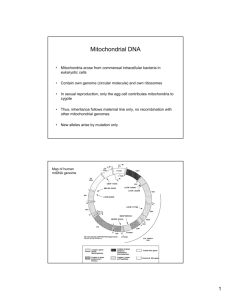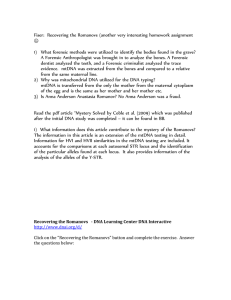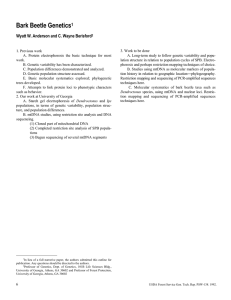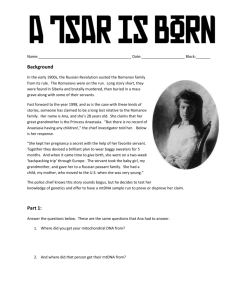Mitochondrial Replacement Techniques: Did you know?
advertisement
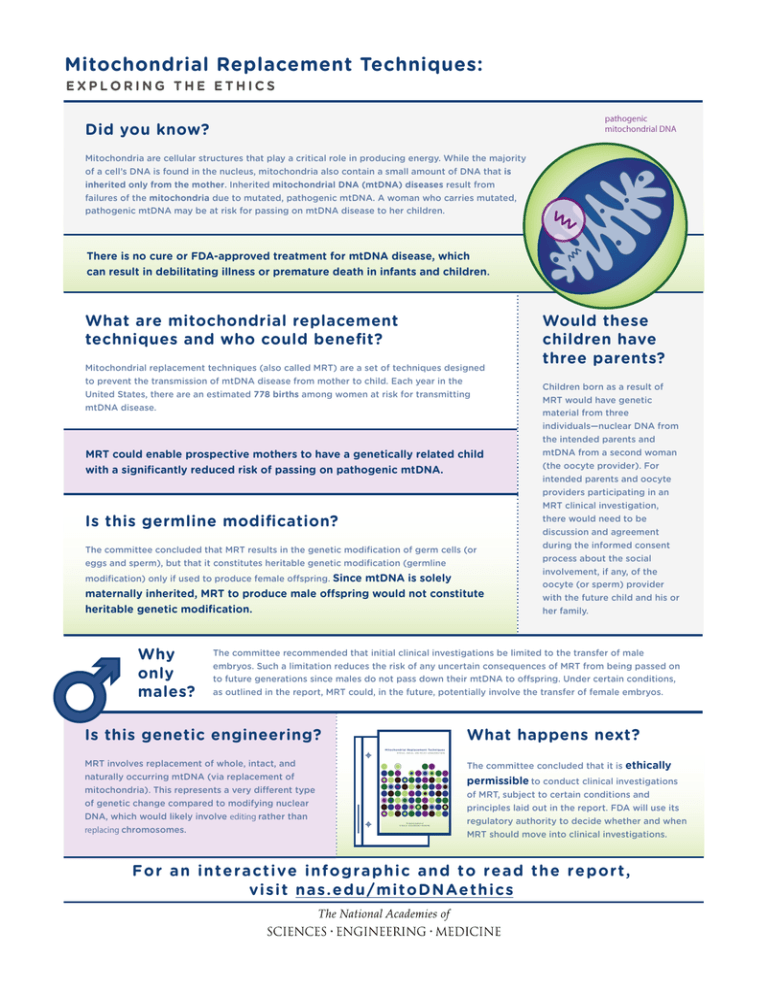
Mitochondrial Replacement Techniques: EXPLORING THE ETHICS pathogenic mitochondrial DNA Did you know? Mitochondria are cellular structures that play a critical role in producing energy. While the majority of a cell’s DNA is found in the nucleus, mitochondria also contain a small amount of DNA that is inherited only from the mother. Inherited mitochondrial DNA (mtDNA) diseases result from failures of the mitochondria due to mutated, pathogenic mtDNA. A woman who carries mutated, pathogenic mtDNA may be at risk for passing on mtDNA disease to her children. There is no cure or FDA-approved treatment for mtDNA disease, which can result in debilitating illness or premature death in infants and children. What are mitochondrial replacement techniques and who could benefit? Mitochondrial replacement techniques (also called MRT) are a set of techniques designed to prevent the transmission of mtDNA disease from mother to child. Each year in the United States, there are an estimated 778 births among women at risk for transmitting mtDNA disease. MRT could enable prospective mothers to have a genetically related child with a significantly reduced risk of passing on pathogenic mtDNA. Is this germline modification? The committee concluded that MRT results in the genetic modification of germ cells (or eggs and sperm), but that it constitutes heritable genetic modification (germline modification) only if used to produce female offspring. Since mtDNA is solely maternally inherited, MRT to produce male offspring would not constitute heritable genetic modification. Why only males? Would these children have three parents? Children born as a result of MRT would have genetic material from three individuals—nuclear DNA from the intended parents and mtDNA from a second woman (the oocyte provider). For intended parents and oocyte providers participating in an MRT clinical investigation, there would need to be discussion and agreement during the informed consent process about the social involvement, if any, of the oocyte (or sperm) provider with the future child and his or her family. The committee recommended that initial clinical investigations be limited to the transfer of male embryos. Such a limitation reduces the risk of any uncertain consequences of MRT from being passed on to future generations since males do not pass down their mtDNA to offspring. Under certain conditions, as outlined in the report, MRT could, in the future, potentially involve the transfer of female embryos. Is this genetic engineering? What happens next? MRT involves replacement of whole, intact, and naturally occurring mtDNA (via replacement of mitochondria). This represents a very different type of genetic change compared to modifying nuclear DNA, which would likely involve editing rather than replacing chromosomes. The committee concluded that it is ethically permissible to conduct clinical investigations of MRT, subject to certain conditions and principles laid out in the report. FDA will use its regulatory authority to decide whether and when MRT should move into clinical investigations. F or a n i n te r a c ti ve i n f o g rap h i c and t o re ad t h e re p or t , vi s i t nas . e d u / mi t o D N Ae t h i c s
